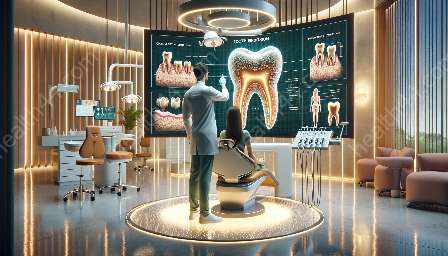Bruxism, commonly known as tooth grinding, is a significant dental issue that often goes hand in hand with headaches and tooth erosion. Understanding the association between these conditions is crucial for effective prevention and management. In this comprehensive topic cluster, we will delve into the causes, symptoms, and treatments of bruxism, its relationship with headaches, and its impact on tooth erosion.
The Connection Between Bruxism and Headaches
Bruxism refers to the involuntary and excessive grinding or clenching of the teeth, commonly occurring during sleep. This action can exert significant pressure on the jaw joint and surrounding muscles, leading to various symptoms, including headaches. The muscles involved in bruxism are closely associated with those responsible for causing tension-type headaches and migraines, resulting in a clear link between the two conditions.
Understanding Tooth Grinding (Bruxism)
There are two main types of bruxism: awake bruxism, which occurs during periods of wakefulness, and sleep bruxism, which takes place during sleep. While the exact causes of bruxism are not fully understood, various factors contribute to its development, including stress, anxiety, malocclusion, and certain medications. Individuals with bruxism often experience jaw pain, tooth sensitivity, and disrupted sleep, in addition to the associated headaches.
Impact on Tooth Erosion
Bruxism can also result in tooth erosion, a condition characterized by the loss of tooth enamel due to mechanical or chemical factors. The continuous grinding and clenching of teeth can wear down the protective enamel, leading to heightened tooth sensitivity, increased risk of cavities, and aesthetic concerns. Proper management of bruxism is vital in preventing the progression of tooth erosion and preserving dental health.
Causes of Bruxism-Related Headaches
The intense and repetitive muscle contractions involved in bruxism can lead to muscle fatigue and trigger headaches. Additionally, the strain placed on the temporomandibular joint (TMJ) during bruxism episodes can cause referred pain that manifests as headaches. Moreover, the resulting tension and soreness in the jaw and facial muscles can contribute to the development of chronic headaches and migraines.
Symptoms and Diagnosis
Understanding the symptoms of bruxism and its associated headaches is crucial for timely diagnosis and intervention. Common signs of bruxism include worn tooth enamel, flattened tooth surfaces, jaw pain, and headaches. Individuals experiencing such symptoms should seek professional dental evaluation to confirm the presence of bruxism and devise an appropriate treatment plan.
Management and Treatment Options
Treatment for bruxism aims to address both the underlying causes and the resulting symptoms. Stress management techniques, the use of dental appliances such as mouth guards or splints, and behavior modification strategies can effectively reduce tooth grinding and alleviate associated headaches. In severe cases, dental interventions may be necessary to correct dental misalignments contributing to bruxism.
Preventing Tooth Erosion
Given the detrimental effects of bruxism on tooth enamel, preventive measures are essential to protect dental health. Patients with bruxism may require special dental care, including the application of dental sealants, fluoride treatments, and regular monitoring for signs of tooth wear. Establishing good oral hygiene practices and seeking professional guidance can help mitigate the impact of bruxism-induced tooth erosion.
Conclusion
Exploring the association between bruxism, headaches, and tooth erosion sheds light on the intricate relationship among these conditions. By recognizing the underlying mechanisms and interconnectedness of these issues, individuals can take proactive steps to manage bruxism, alleviate headaches, and safeguard dental integrity. Through effective preventive measures and targeted treatment strategies, the adverse impact of bruxism on both oral health and overall well-being can be minimized.


